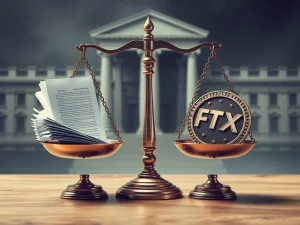Mastering Stablecoin Attestation: Your Crucial Guide to Verifying Crypto Reserves

In the dynamic world of cryptocurrency, stablecoins act as a crucial bridge between traditional fiat currencies and the decentralized digital economy. They offer stability amidst crypto’s volatility, making them essential for trading, lending, and everyday transactions. But how can you be sure that the stablecoin you hold is genuinely backed by real-world assets? This is where understanding a stablecoin attestation report becomes not just a skill, but a vital defense for your digital assets.
What is a Stablecoin Attestation Report and Why Does it Matter?
A stablecoin attestation report is a formal document, typically issued by an independent certified public accountant (CPA) firm. Its primary purpose is to verify whether a stablecoin issuer holds sufficient reserves to back the coins in circulation. Think of it as a snapshot: the report confirms specific facts, like whether reserve balances match the circulating supply, at a single point in time. It’s not a full financial audit, which evaluates broader systems and controls, but rather a focused check that builds trust by providing evidence that the issuer’s claims are accurate.
For example, if a stablecoin claims a 1:1 backing by US dollars, an attestation report provides the independent verification. Stablecoins like USDC regularly publish these reports, fostering confidence in their ecosystem. This transparency is critical for anyone using stablecoins for cross-border settlements, collateral in lending protocols, or participation in decentralized finance (DeFi) applications. Without confidence in these reserves, the entire stablecoin system faces significant risk.
Understanding Stablecoin Reserves: The Core of Trust
Transparency is paramount in the crypto space, especially for stablecoins. Attestation reports offer a clear view into an issuer’s stablecoin reserves and disclosure practices, enabling users, regulators, and investors to assess responsible operation. Issuers like Circle, behind USDC, use these reports to demonstrate compliance and assure users that their coins are stable in substance, not just name.
This commitment to transparency builds a foundation for regulatory trust and helps attract traditional financial institutions into the digital asset space. It also aligns with broader industry goals for increased stablecoin compliance, particularly as governments worldwide explore specific regulations. The AICPA’s 2025 Criteria for Stablecoin Reporting, for instance, introduced a standardized framework for fiat-pegged, asset-backed tokens, defining how issuers should present and disclose:
- Redeemable tokens outstanding.
- The availability and composition of redemption assets.
- The comparison between the two.
This framework emphasizes clear definitions for redeemable versus non-redeemable tokens (like time-locked or test tokens), where reserves are held, and any material risks affecting redemption. By adhering to these standards, accounting firms ensure objective and measurable evaluations, giving investors and regulators a more consistent basis for evaluating stablecoin solvency and trustworthiness.
Ensuring Crypto Transparency: Who Conducts These Crucial Checks?
Crypto transparency relies heavily on independent third parties. Stablecoin attestation reports are prepared by independent accounting firms. For instance, Circle’s USDC attestation reports are conducted by Deloitte, a leading global audit and advisory firm. These firms adhere to professional standards set by bodies like the AICPA (American Institute of Certified Public Accountants).
The independence of these attestors is vital. It removes potential conflicts of interest, ensuring the information provided is unbiased, credible, and aligns with global assurance standards. This external verification is a cornerstone of building trust in the digital asset market.
Navigating Your USDC Attestation Report: A Step-by-Step Guide
Reading a USDC attestation report effectively means knowing where to look for key information. Here’s a breakdown of how to interpret these reports and identify genuine backing:
- Check the Report Date: Attestations are point-in-time reviews. Note the exact date the report covers, as it confirms reserves only for that specific day.
- Compare Circulating Supply vs. Reserves: Locate the number of tokens in circulation and the total value of reserves. The reserves should always be equal to or greater than the circulating supply. A discrepancy here is a major warning sign.
- Examine Reserve Composition: Reserves should be held in safe, liquid assets such as US Treasurys or cash in regulated financial institutions. Be cautious of vague or risky asset descriptions.
- Review Custodian Details: Identify who is holding the funds (e.g., major banks or money market funds) and where they are stored. Reputable custodians add significant credibility.
- Understand the Methodology: The report should detail how the review was conducted, what data was verified, and which standards (like AICPA) were followed.
- Identify Excluded Tokens: Some tokens, like test tokens or time-locked tokens, are excluded from circulation counts. Look for notes explaining these exceptions to ensure an accurate picture of user-accessible stablecoins.
- Verify the Attestor: An independent and recognized accounting firm (like Deloitte or Grant Thornton) adds legitimacy. If the attestor is not disclosed or lacks independence, proceed with caution.
For example, Circle’s February 2025 attestation report, examined by Deloitte, confirmed that as of both Feb. 4 and Feb. 28, 2025, the fair value of Circle’s reserves was equal to or greater than the amount of USDC in circulation. The reserves primarily consisted of US Treasury securities, Treasury repurchase agreements, and cash at regulated financial institutions, kept separate from Circle’s corporate funds.
Here’s a snapshot of the data from that report:
| Date | USDC in Circulation | Fair Value of Reserves |
|---|---|---|
| Feb 4, 2025 | $54.95 billion | $55.01 billion |
| Feb 28, 2025 | $56.28 billion | $56.35 billion |
This data illustrates the consistent backing of USDC, providing users with confidence.
The Verification Process: Unpacking Proof of Reserves
Proof of reserves is the underlying concept that stablecoin attestation reports aim to provide. The verification process typically involves several key steps conducted by independent accounting firms:
- Reviewing bank statements and other financial records.
- Confirming cash balances held by custodians.
- Cross-checking reported reserves with third-party documentation.
- Comparing the supply of stablecoins on-chain with the reported reserve amount.
These procedures ensure that reserves are not only sufficient but also liquid and accessible. Some reports even include details on tools and technologies used to maintain transparency, such as real-time API integrations with custodians and on-chain monitoring systems. These advancements help bridge the gap between traditional finance and blockchain, reinforcing trust through verifiable data.
What happens if an attestation report reveals insufficient reserves? The consequences can be severe. The issuer may face intense regulatory scrutiny, leading to noncompliance with financial regulations. A drop in user confidence could trigger mass redemptions and market sell-offs, causing the stablecoin to lose its 1:1 peg and potentially impacting the broader crypto market. The ongoing criticism faced by some stablecoin issuers for a lack of clarity surrounding their reserves underscores the importance of proactive disclosure as a business imperative.
Limitations and Beyond the Snapshot
While attestation reports are crucial, they are not a complete solution. It’s important to understand their limitations:
- Point-in-Time Snapshots: Reports only verify reserves on a specific date. They don’t provide real-time updates.
- No Forward-Looking Guarantees: Attestations don’t predict future solvency or guarantee stability beyond the reported date.
- Limited Operational Insight: They typically don’t cover broader operational risks such as potential hacking, mismanagement, or unforeseen liquidity issues.
For example, the USDC attestation discussed confirms full reserves as of specific dates in February 2025, but it does not speak to the situation on any day after. Users must understand these limitations and avoid assuming that an attestation equals absolute safety. Therefore, combining attestation reports with other forms of due diligence, such as reading legal disclaimers, following regulatory updates, and tracking company behavior, is key for responsible crypto participation.
A Roadmap to Trust in Crypto
Reading a stablecoin attestation report is more than just scanning numbers; it’s a fundamental step in assessing the trustworthiness of a digital asset. By understanding how to interpret these reports, crypto users can make informed decisions, avoid unnecessary risks, and support projects that prioritize compliance and transparency. With clearer frameworks from institutions like the AICPA and growing public pressure for better disclosure practices, the ecosystem is steadily moving toward greater accountability.
As regulators sharpen their focus and investors demand more visibility, learning to navigate these crypto attestation reports will become an essential skill for all participants in the crypto economy. Whether you are a retail investor, a developer, or an institutional player, mastering these reports helps protect your assets and supports a more transparent and trustworthy crypto future.










